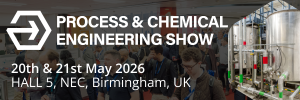Pump proves to be a cut above in salmon industry
At Stornoway’s Creed Integrated Waste Management Facility (IWMF) on the Isle of Lewis, the Borger Multicrusher consistently chops tonnes of coarse waste salmon per shift. This has enabled the facility to integrate the fish with household food waste and garden waste for its AD/biogas process.
Based on the design of the Borger Rotary Lobe Pump, the twin-shaft Multicrusher homogenises the waste salmon to facilitate the pumping and pasteurisation process ensuring that downstream equipment can operate smoothly.
By inserting individual blade disks and defining the direction of rotation of the shafts, operators have the flexibility to choose which way the pumped medium flows. Various blade widths and cutting profiles determine the final cutting yield.
Crucially guaranteeing the shred of waste salmon to meet specific regulations for the safe use of digestate as a renewable fertiliser, the machine cuts the waste to the required maximum particle size of 12mm.
This vital cog in the process has helped Comhairle nan Eilean Siar, the local authority for the Western Isles, together with its partners The Scottish Salmon Company, Pure Energy Centre PEC and Community Energy Scotland win the prestigious Scottish Environment Business VIBES award.
Donnie Macmillan, Plant Manager at the Creed facility, said: “Borger’s Multicrusher works extremely well for us in a very harsh environment. Some salmon waste can be quite tough and abrasive, so understandably we see wear on the cutters during our inspections, but that’s perfectly understandable.
He added: “Importantly, the Borger unit helps us meet all of our PAS 110 requirements, which is all part of what we set out to achieve here - optimising the methods of managing waste - in this case not sending waste salmon to landfill sites, and not having to have it transported off the island.”
David Brown, Borger UK’s Managing Director, said: “We are very proud to play our part at Creed. It rightly deserves all the praise it gets for showing what can be done to protect the environment and reduce carbon footprint with good practice, forward-thinking and hard work.”
Managing waste from the island’s population of about 22,000, the Creed IWMF has grown steadily to include a combined heat and power plant (CHP), electric boiler and thermal store, a wind turbine and a hydrogen system comprising electrolyser, storage and refuelling station and a 960m3 AD/biogas plant.
Some of the electricity generated by the CHP is used to produce hydrogen and oxygen. This is captured, compressed and delivered to the salmon hatchery, where oxygenation is essential.












